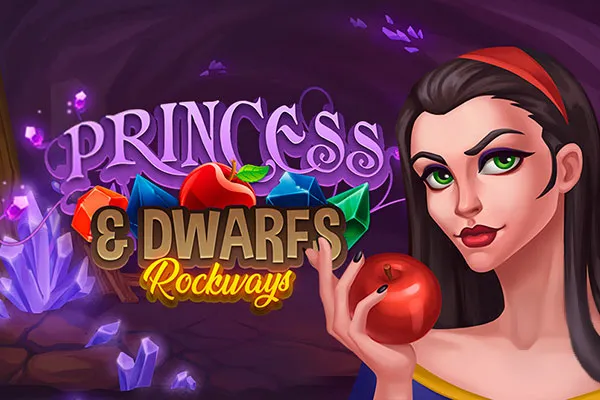Kamla Horror Game: Unveiling the Terror, Lore, and Indian Roots of a Rising Sensation
The world of horror gaming is constantly evolving, pushing boundaries and exploring new cultural landscapes. Among the latest titles to capture the attention of gamers, particularly in India, is "Kamla," a horror game steeped in Indian folklore and supernatural elements. This article delves into the chilling depths of the "Kamla horror game," exploring its gameplay, story, cultural significance, and why it's resonating with players seeking a unique and terrifying experience.
What is the Kamla Horror Game?
"Kamla" isn't just another jump-scare filled horror title. It aims to deliver a deeply unsettling experience rooted in Indian mythology and societal anxieties. While specific details may vary depending on the version or developer, the core concept typically revolves around a protagonist confronting a malevolent entity known as Kamla, often depicted as a vengeful spirit or a demonic force.
The game typically incorporates elements of:
- Indian Folklore: Drawing inspiration from local legends, myths, and ghost stories prevalent in various regions of India.
- Psychological Horror: Emphasizing atmosphere, suspense, and the protagonist's deteriorating mental state rather than relying solely on graphic violence.
- Puzzle Solving: Incorporating puzzles based on Indian traditions, rituals, or symbolic objects that players must solve to progress.
- Stealth Gameplay: Requiring players to avoid detection by Kamla or other supernatural entities, adding a layer of tension and vulnerability.
- Environmental Storytelling: Using the game's environment, including dilapidated houses, ancient temples, and eerie forests, to reveal the story and deepen the sense of dread.
The Story Behind the Terror: Exploring the Lore of Kamla
The narrative of the "Kamla horror game" is often closely tied to the character of Kamla herself. While the specifics can vary, common themes and origins emerge:
- Vengeful Spirit: Kamla is frequently portrayed as the spirit of a woman who suffered a tragic and unjust death, seeking retribution against those who wronged her or their descendants. This resonates with the cultural understanding of spirits and karmic justice.
- Demonic Entity: In some interpretations, Kamla is a demonic entity or a powerful evil force that preys on the vulnerable, exploiting their fears and weaknesses.
- Guardian Turned Malevolent: A more nuanced approach presents Kamla as a guardian spirit or deity who has become corrupted or angered, turning against those she was meant to protect. This explores themes of betrayal and the dangers of unchecked power.
- Social Commentary: The story often carries undertones of social commentary, addressing issues such as gender inequality, caste discrimination, or the exploitation of the marginalized, which may have contributed to Kamla's tragic fate.
The name "Kamla" itself is a common Indian name, adding a layer of familiarity and realism to the horror. This makes the game more relatable and unsettling for Indian players. The use of familiar cultural elements within a horror context amplifies the fear factor, as it taps into deeply ingrained beliefs and anxieties.
Gameplay Mechanics and Features
The gameplay of "Kamla horror game" is designed to immerse players in a terrifying and suspenseful experience. Key gameplay mechanics often include:
- First-Person Perspective: Enhances immersion and allows players to experience the horror directly through the eyes of the protagonist.
- Limited Resources: Scarcity of essential items like light sources, healing items, or protective charms increases tension and forces players to make strategic decisions.
- Stealth and Evasion: Players must rely on stealth to avoid detection by Kamla and other supernatural entities. This may involve hiding in shadows, using distractions, or utilizing protective rituals.
- Puzzle Solving: Puzzles based on Indian mythology, symbolism, or traditional practices challenge players' intellect and require them to understand the cultural context of the game.
- Sanity Meter: Some versions of the game incorporate a sanity meter that decreases as the player witnesses terrifying events or spends too long in the presence of Kamla. A low sanity level can lead to hallucinations, increased vulnerability, and ultimately, death.
- Environmental Interaction: Players can interact with the environment to uncover clues, solve puzzles, or find items that will help them survive. This may involve examining ancient texts, deciphering cryptic symbols, or performing specific rituals.
Why "Kamla" Resonates with Indian Gamers
The "Kamla horror game" has found a significant audience in India for several reasons:
- Cultural Relevance: The game's use of Indian folklore, mythology, and social themes makes it relatable and engaging for Indian players. It taps into their cultural understanding of the supernatural and their anxieties about societal issues.
- Unique Horror Experience: Unlike many Western horror games that focus on gore and jump scares, "Kamla" offers a more psychological and atmospheric horror experience that is less reliant on shock value and more on building suspense and dread.
- Support for Local Developers: The rise of Indian game developers creating culturally relevant content has been met with enthusiasm from Indian gamers who are eager to support local talent.
- Word-of-Mouth and Online Communities: The game's popularity has been fueled by word-of-mouth recommendations and online communities where players share their experiences, theories, and fan art.
- Accessibility: Many indie horror games, including versions of "Kamla," are often more accessible in terms of pricing and system requirements, making them appealing to a wider range of gamers.
The Future of Indian Horror Gaming
The success of the "Kamla horror game" signals a growing trend in the Indian gaming industry: the rise of culturally relevant horror games that tap into local folklore and anxieties. This trend has the potential to:
- Promote Indian Culture: Showcase Indian mythology, history, and social issues to a global audience.
- Create Unique Gaming Experiences: Offer fresh and innovative horror experiences that are distinct from Western horror tropes.
- Empower Indian Game Developers: Provide opportunities for Indian game developers to create and market their games to a global audience.
- Foster a Sense of Community: Connect Indian gamers through shared cultural experiences and a passion for horror gaming.
Finding the Kamla Horror Game: Where to Play
Finding a definitive "Kamla horror game" can be a bit tricky, as it may exist as various indie projects or games with similar themes. Here's how to find and potentially play a version of the game:
- Online Game Platforms: Check platforms like Steam, itch.io, and GameJolt for indie horror games with "Kamla" in the title or description. Look for games tagged with "Indian horror," "folklore," or "psychological horror."
- YouTube and Gaming Forums: Search YouTube for gameplay videos and reviews of "Kamla horror game." These videos may provide links to download or purchase the game. Check gaming forums and communities for discussions and recommendations.
- Indian Game Development Communities: Explore online communities and forums dedicated to Indian game development. These communities may feature developers working on "Kamla" or similar horror games.
- Search Engines: Use search engines like Google or DuckDuckGo to search for "Kamla horror game download" or "Indian horror games." Be cautious when downloading files from unknown sources.
Important Note: Always exercise caution when downloading and installing games from the internet. Ensure that you are downloading from a reputable source and that your antivirus software is up to date.
The Enduring Appeal of Fear: Why We Play Horror Games
The enduring popularity of horror games like "Kamla" stems from our fascination with fear and the thrill of confronting our anxieties in a safe and controlled environment. Horror games offer:
- Adrenaline Rush: The sudden scares, suspenseful atmosphere, and sense of danger trigger the release of adrenaline, creating a thrilling and exciting experience.
- Emotional Release: Confronting our fears in a virtual world can be cathartic, allowing us to process and release pent-up emotions.
- Sense of Mastery: Overcoming challenges and surviving terrifying encounters in horror games can boost our self-confidence and give us a sense of accomplishment.
- Exploration of the Unknown: Horror games often explore themes of death, the supernatural, and the dark side of human nature, allowing us to confront the unknown and grapple with existential questions.
- Social Connection: Sharing our experiences and discussing our fears with other players can foster a sense of community and connection.
Conclusion: The Rise of Culturally Relevant Horror
The "Kamla horror game" is more than just a game; it's a cultural phenomenon that reflects the growing interest in culturally relevant horror experiences. By drawing inspiration from Indian folklore, mythology, and social issues, the game offers a unique and terrifying experience that resonates with Indian gamers and has the potential to captivate a global audience. As the Indian gaming industry continues to evolve, we can expect to see more innovative and culturally rich horror games that push the boundaries of fear and explore the depths of the human psyche. The success of titles like "Kamla" paves the way for a new era of horror gaming, one that celebrates diversity, cultural authenticity, and the universal appeal of fear.
Related Pages
- Abhishek Sharma Stats 2023: Unbelievable IPL Records & Career Highlights Every Fan Must See!
- Explore Bodoland University: Top Courses, Admissions, and Career Opportunities for Indian Students!
- धनंजय सिंह: माफिया डॉन से विधायक तक का विवादित सफर!
- PM Awas Yojana 2025: Unlock Affordable Homes, Apply Now for India's Biggest Housing Scheme!
- Quickly Convert 5.4 Feet to CM: Essential Guide for Indian Users!









